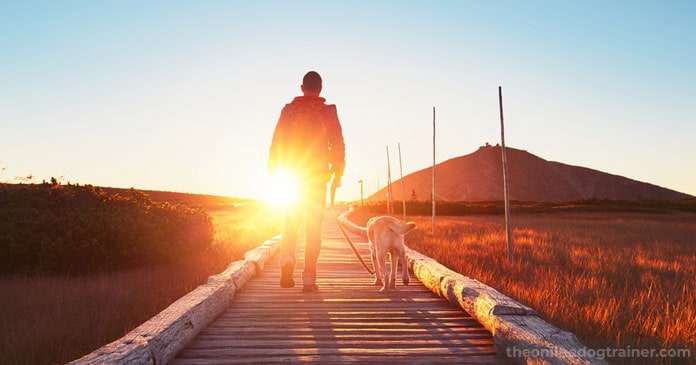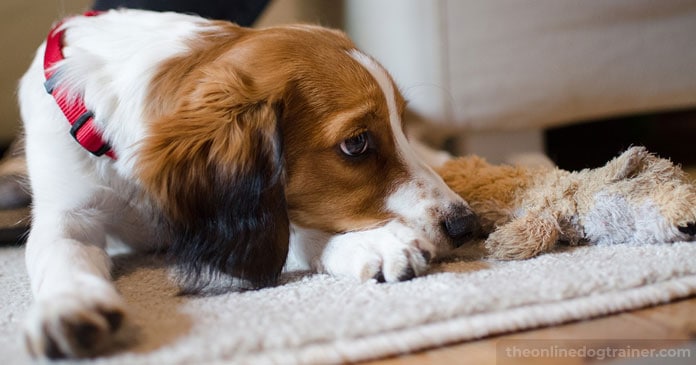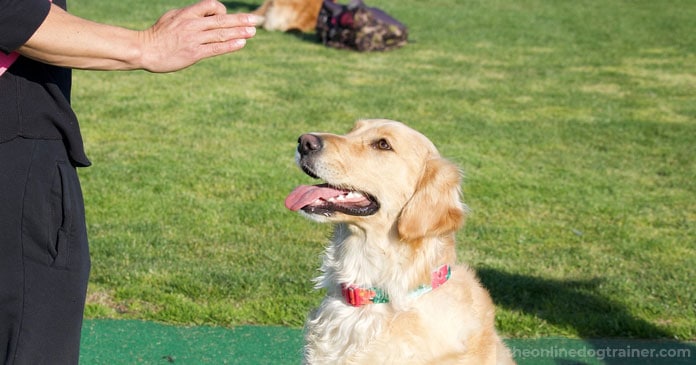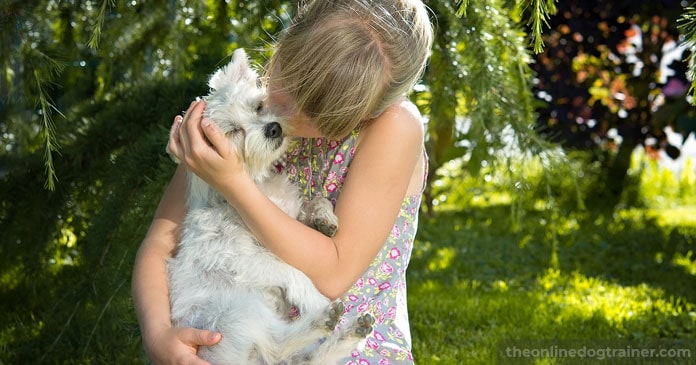
There’s a lot of excitement and anticipation about bringing a new dog into your home! And much like bringing home a new baby, there’s also some prep work involved to ensure the transition is smooth.
While most dogs—regardless of whether they are adults or puppies—require similar setups and routines, there are a few things to consider when bringing a rescue into your home. And, if you’ve never owned a dog before, it’s important to do your research to ensure your house is dog-friendly so that your new canine companion will be safe and happy in their new space.
What do you need to be thinking about BEFORE your pup comes home? Keep reading to discover my tips for acclimating a rescue dog into your home.
Rescue Dog Acclimation Step #1: Set Up a Safe Space

First and foremost, you need to have a proper space set up for your new fur baby.
I personally recommend finding a quiet spot where you can set up a crate and/or playpen. In this area your dog should have access to a bed and/or blankets, a toy or two, and a bowl of fresh water.
Setting up this space is so important, as all dogs need a den-like spot where they can rest and feel safe. This space can also be used to house your pet when you’re out of the house or for times when you can’t devote your full attention to your dog.
Of course, your dog shouldn’t be restricted to a cage or playpen all day long. But, this type of setup is great for when you can’t keep an eye on your pup or for overnight.
It’s also a great way to ensure your new dog stays safe and out of trouble.
Think about it…you likely have no idea what your new dog’s past life looked like. Perhaps your pup was left outside 24/7, and they don’t know how to properly live inside a home. Or, maybe your new pup never had any rules in their previous home, leading them to become destructive.
Until you really learn more about your pup and put some training in place, setting up a safe space for your dog is essential.
Rescue Dog Acclimation Step #2: Start a Routine

Most dogs thrive on routines. After all, it’s nice to have some structure and after a while your pup will be able to pick up on when it’s time to eat, play, sleep, use the potty, etc.
This type of routine instills a sense of security for your pup. After some time, your dog won’t have to worry about whether they are getting fed or will be let out to use the bathroom.
In the long run, a solid routine can help get rid of some of your dog’s anxiety…especially if your pup was neglected in their past life. It also helps keep you accountable for ensuring that all of your dog’s needs are met.
It’s a win-win for everyone!
I recently wrote an article that provided an ultimate puppy schedule that new puppy parents can follow at home. Even if your rescue dog isn’t a puppy, the article is worth checking out!
Learn more about my Ultimate Puppy Schedule here!
Rescue Dog Acclimation Step #3: Maintain Calm Energy In Your Household

There’s nothing more exciting than bringing home a new dog! But, while you might be filled with excitement, it’s possible that your new canine companion is anxious, fearful, and overwhelmed.
Take a moment to put yourself in your dog’s paws…
You go from living outside 24/7 chained to a dog house. You’re then moved into a loud and busy shelter. Then one day you’re scooped up, thrown into a car, and are taken to yet another strange new home.
This can be very overwhelming for your new dog. Knowing this, it’s important to keep your energy quiet and calm as you transition your pup.
I personally would recommend that, at least for the first few days, you refrain from…
- Having a bunch of strange visitors come into your home.
- Blaring the TV or blasting music.
- Taking your dog to pet stores or heavily populated areas.
Allow yourselves a few days to get to know each other calmly as you start to build your relationship. Then, slowly introduce your pup to new things as he or she becomes more comfortable with their surroundings.
If you have kids, this can add another challenging dynamic into the situation as children tend to be noisy and play rough. It’s your job as a parent to sit down with your kids and explain to them how to interact respectfully with your new family member.
Let your kids know that…
- Screaming
- Chasing
- Invading your dog’s space
…are all behaviors that will not be allowed, as they might scare your new pup.
Rescue Dog Acclimation Step #4: Put a Solid Training Routine in Place

By far, the best thing you can do for a new rescue pup in your home is to establish a solid training routine.
Here’s why…
Training isn’t simply about getting your dog to “sit” or “roll over.” It’s about building a trusting relationship between you and your dog.
When you use kind, gentle training methods, your dog learns to look to you for reassurance and guidance. This takes a lot of stress off your pup as they no longer feel like they are in control or have to be the provider…they can simply enjoy living life as a dog!
Training, of course, also teaches your dog to listen to you when it matters most, which can prevent accidents and other issues down the road.
The cherry on top…
When you spend time training your dog you get to spend quality time together—your pup’s absolute favorite thing!
If you’re unsure of what type of training methods to use, I highly recommend my program, The Dog Calming Code™.
Learn more about The Dog Calming Code here!
Rescue Dog Acclimation Step #5: Be Patient, Be Compassionate, and Love Your Dog

Last, but not least, I want to remind you to be patient, have compassion, and love your dog at all costs.
Up until this point your pup has had a difficult life. Now it’s time to show them what living in a loving home is all about.
Recognize that this journey might not be a cake walk. You might uncover difficult behavioral issues or struggle to bond with your new pup, It’s important to understand that it takes time to acclimate to such a big life change—for both YOU and your dog!
If you take the time to set your dog up for success, you WILL be able to overcome any obstacle. You simply need to stick with it and be patient.
I wish you the best and want to thank you again for saving the life of a dog in your community!
Best wishes,

~Doggy Dan 🙂







2 Responses
Good advice
Thanks Joan! Doggy Dan